New Exhibition Unveils Different Dimension of Dali | Destination Tampa Bay Exhibit Feature
8/30/2021
Destination Tampa Bay features Michael Murphy Gallery's Salvador Dali exhibit. Read the full article here!
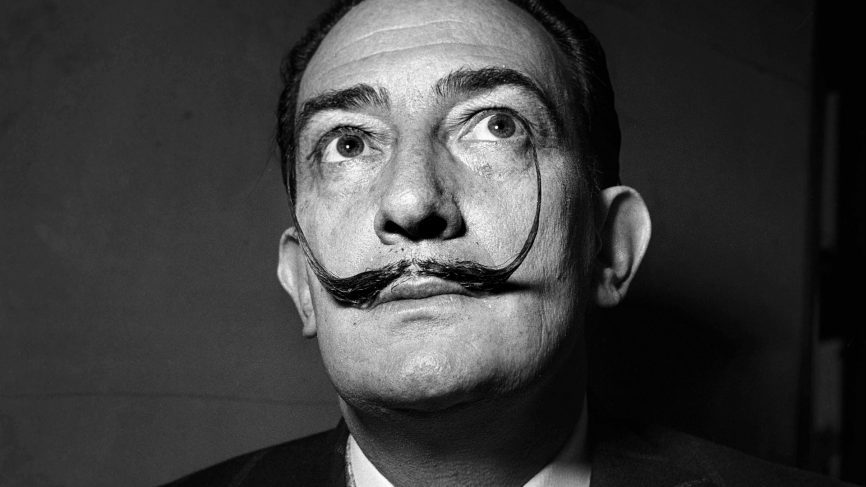
Salvador Dali: The Argillet Collection
By Chris Kuhn
Art lovers in the Bay area will have a new reason to celebrate a beloved, creative talent. Michael Murphy Gallery (MMG) in Tampa hosts Salvador Dali: The Argillet Collection, a unique exhibit of original Salvador Dali etchings and other works, to be on display and available for acquisition from Friday, September 17, 2021 through Sunday, September 26, 2021. The Argillet Collection, comprised of over 200 etchings, copper plates, tapestries, watercolors and more, is the result of over 30 years of collaboration between esteemed art publisher and collector Pierre Argillet and famed Surrealist artist Salvador Dali. Their friendship spanning five decades extended beyond the relationship of the two men to the publisher’s family, as well, including Collection Curator and daughter of Argillet, Christine Argillet, who continues to oversee the presentation of the touring collection at art galleries and museums across the world. She will be a special guest of the Gallery during the exhibition’s closing weekend, appearing onsite to meet with visitors Saturday, September 25 from 1:00 p.m. to 3:00 p.m. and 7:00 p.m. to 9:00 p.m. and Sunday, September 26 from 1:00 p.m. to 3:00 p.m. Her guest appearances at Michael Murphy Gallery are complimentary and open to the public with RSVPs strongly encouraged.

“Salvador Dali: The Argillet Collection is such a unique and immersive fine art experience, and MMG is honored to present a world-class museum-provenanced Exhibition,” says Deana Buckley, director of the Michael Murphy Gallery. “Collectors of Salvador Dali’s works and our valued patrons and guests will have the opportunity to interact with the artwork, the rare Aubusson tapestries and the world-renowned Dali etchings that are an unparalleled intimate connection to the Artist himself.” (Large Tapestry LEFT: Nude and Garter by Dali)
The exhibition Salvador Dali: The Argillet Collection will feature 80-100 works from the Collection and includes etchings, watercolors, handwoven tapestries, preparatory washes and drawings, and a few Limoges plates.
Salvador Dali: The Argillet Collection Sample Artwork, Etchings, Drawings and More:
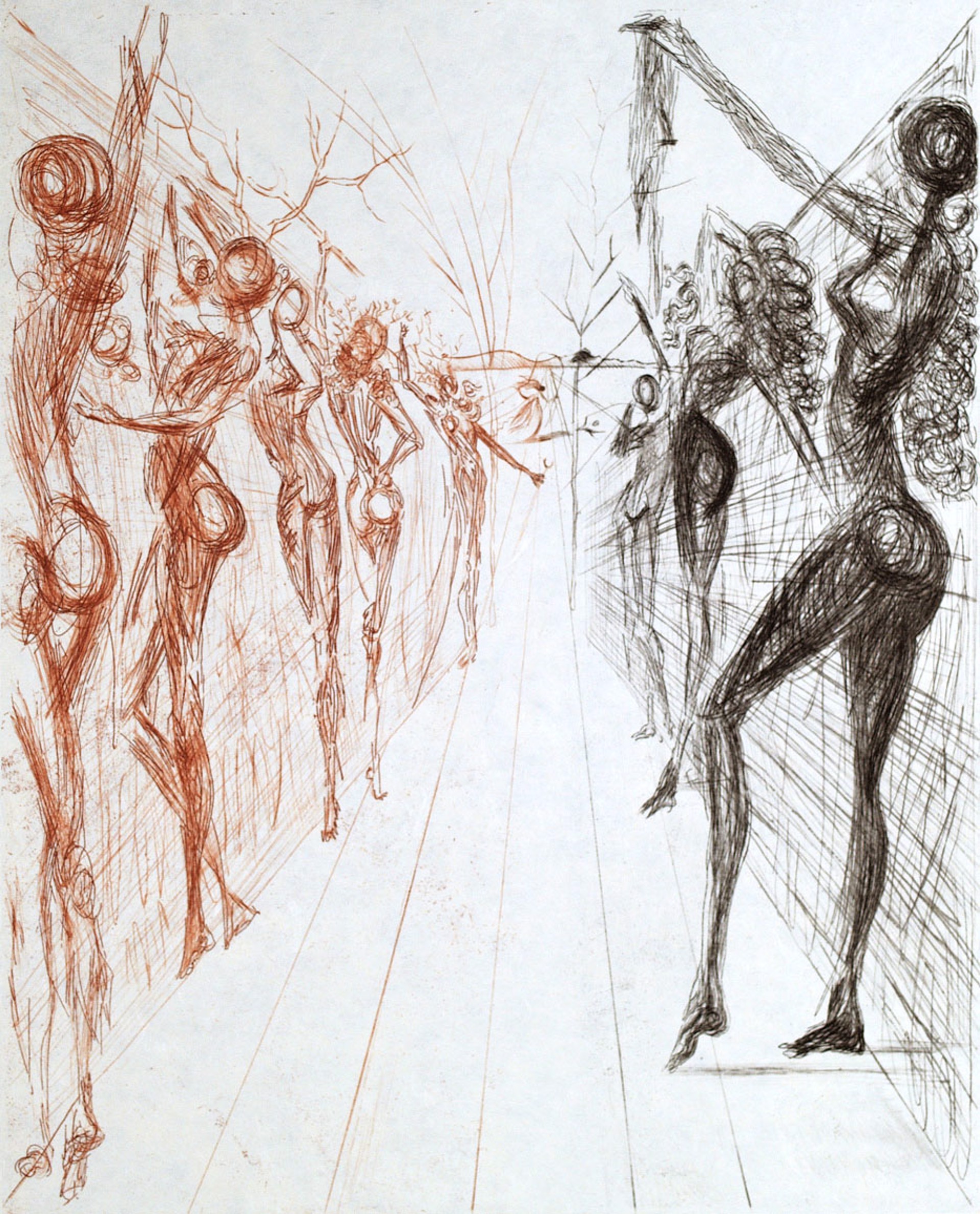
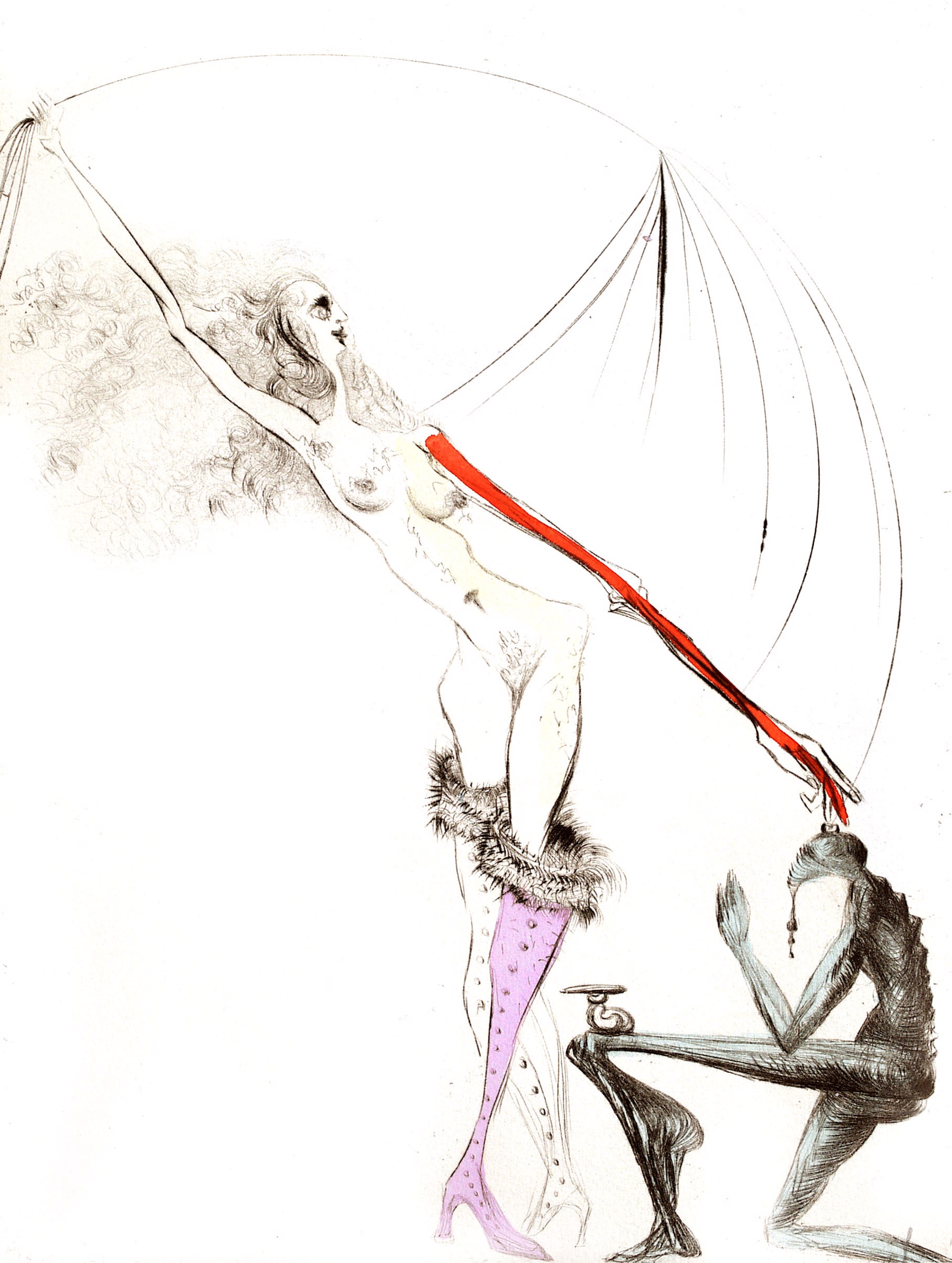
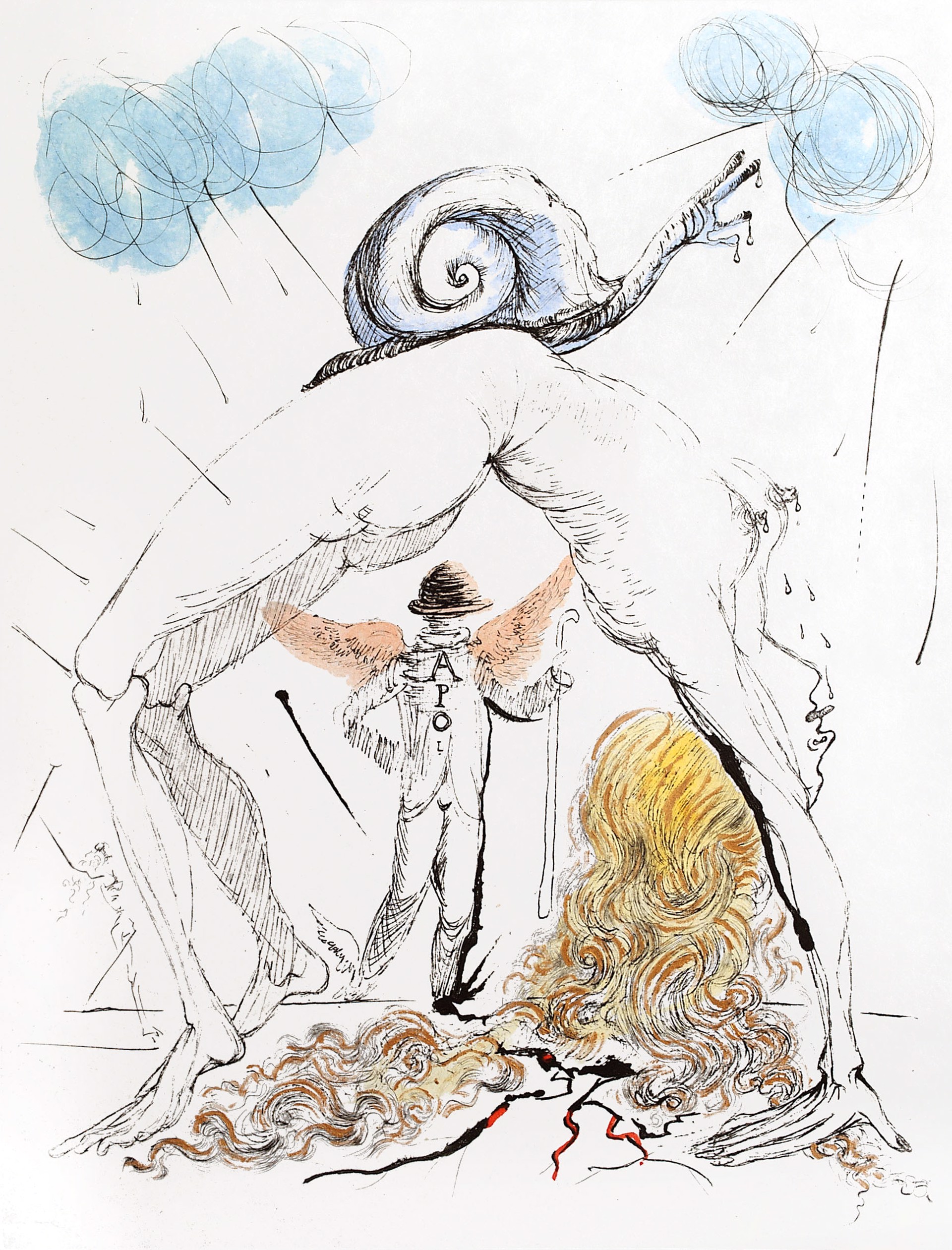

“This touring exhibition was a wonderful opportunity to put something close to what people know as Dali and his major paintings they can see in St. Petersburg,” says Christine Argillet, who met Michael Murphy over a decade ago and worked closely with him at that time to present a selection of works from her father’s collection. His fine art gallery is located at 2701 S. MacDill Avenue in Tampa and has been a longtime destination for area art aficionados. “I wanted to show the etchings as a personal tribute to my father.” Argillet notes that this latest tour of the Collection shares an intimate glimpse of the Argillet family’s interaction with the artist through cherished photos, home movie footage and other shared memories, and Michael Murphy Gallery felt like the ideal space to share such an intimate presentation of the artist’s work and relationship with his publisher. (RIGHT- Collection Curator and daughter of Argillet, Christine Argillet.)
A LEGACY OF ART AND FRIENDSHIP

Pierre Argillet and Salvador Dali met in 1934 and began a lifelong friendship and a fruitful and creative period for the artist, building what would become the Dali Argillet Collection. While Argillet was in the presence of artists across the Dada and Surrealist spectrum, his daughter Christine says that it was Dali who stood out most of all. (LEFT- Photo of the friends Pierre Argillet and Salvador Dali ).
My father was a big fan of Dali, and I would say much more a fan of Dali than the other artists he was publishing. He was so passionate about the art that Dali would say Argillet is more Dali than myself,” she says with a laugh. It was not uncommon for Pierre Argillet to speak with his family about projects that he and Dali were collaborating on and as his daughter points out, it was Dali’s sometimes demanding or spontaneous personality that could impact whether a project came to fruition or not.
“Dali was not an easy person to work with sometimes because he had some demands that were inaccessible,” says Argillet. She describes one such incident when Dali asked her father to organize a fire in a public swimming pool in Paris and recalls Pierre Argillet taking her by the hand and going to different swimming pool locations to ask for permission, only to be denied often. Finally, when one site agreed to take part, the pool operator (not coincidentally a Dali fan himself) did insist that a well-thought safety plan be in place with cooperation from the area fire rescue unit. Once an elaborate scheme was devised to carry out Dali’s artistic wishes, he was presented with it. Dali was not happy with the setup and cancelled it immediately.
On another occasion, Dali requested a grand piano be placed in a tall oak tree. “My father would always say yes to these ideas and work rapidly on the wave of the spirit of the artist, because he knew he would have to move quickly to get extraordinary things done.” Stories about lofty requests like these cropped up frequently during Christine’s childhood.
GROWING UP WITH DALI
Most of us cannot say we grew up in the presence of the most famous and recognized Surrealist artist in the world. For Christine Argillet, packing up the family to go for a visit to the home of Salvador Dali and wife Gala was a regular occurrence. She reflects on the artist’s penchant for mischief that she remembers fondly.

She recalls many occasions from ages 8 through 21 when she and the artist would find opportunities to engage in humorous conversation or fun antics while her family stopped by the Dali estate. On one visit, her parents had told her to sit quietly, but Dali sent the young girl on a scavenger hunt throughout the maze-like house on a search for candies hidden inside crystal jars. She recollects roaming the home to uncover huge candies, as large as eggs wrapped in shiny papers, and bringing them down to the shore to line them up all in a row as Dali had instructed. Shortly after, each “candy” one popped loudly into a series of small explosions for they were not candies at all, but cherry bombs. It was just one example of the child-like quality and prankster side of Dali. (Right-Christine Argillet growing up with Dali) .
That mischievous side often would spill into his work and interaction with the public. “Dali would speak in a way that people would not know if he was playing or serious. It was a lot of fun to be around, and I remember my father really enjoying that time with Dali,” she says. Argillet recollects one time when Dali was finishing up some copperplate etchings at a hotel before his departure. When she and her father arrived at this room, so much was happening inside the suite, including several other visitors, a TV broadcast and an interview being conducted. The telephone in his hotel room rang, and the concierge told his secretary that an elderly woman downstairs wished to come up to his room and get his signature on a petition against torture.
Dali told the secretary tell them to ask her to come back later, things were too busy at that time. A minute later, the phone rang again, and the hotel concierge apologized but informed them the elderly woman was insistent on coming up to get his signature on that petition because she could not come back later. Dali gave in and told them to send her up to the room. Argillet recalls, “One minute later, we see a very small, old, unpleasant woman wearing her hat with a feather inside with deep, dark eyes. Without saying hello, she pointed her finger at him and said ‘Mr. Dali, I want you to sign my petition against torture.’ It was so ridiculous because here she was coming during the middle of an interview. And Dali stopped and everybody in the room stopped, and Dali looked at her and with his big rolling eyes, said, ‘But you know, Madame, I’m very, very sorry. I love torture!’ The woman runs back, and the next day in the newspaper reads the big title ‘Salvador Dali Says That He Loves Torture.’ It was exactly what he had said, but if you were there, you’d know it was just his humor.”
ANOTHER SIDE OF THE ARTIST
Argillet says that this current selection of pieces from the collection touring offers a different side of the artist. Fans may think they already know his work based on experiencing his major paintings, but as she explains, through the etching process, an artist’s talent and patience can be truly tested by the technique’s unforgiving nature. “Dali was etching his copper plates himself and was an excellent drawer and etcher. Others were translating to lithograph, but this was not the case of Dali when my father published his works, so these etchings that are in the exhibition are works that were genuinely hand sketched and colored by the artist, “she says. “It is a very delicate and difficult technique because it does not allow any cancelling of the line. You cannot change anything, so it reveals the identity of the artist and limits spontaneity in the work. There is something very different with the Dali here than what we have seen in his paintings which can be very magical and taken many months to do and Dali was very spontaneous with those. But here, there is another vision of the artist. The etching brings out an aspect of Dali that is not widely known.”
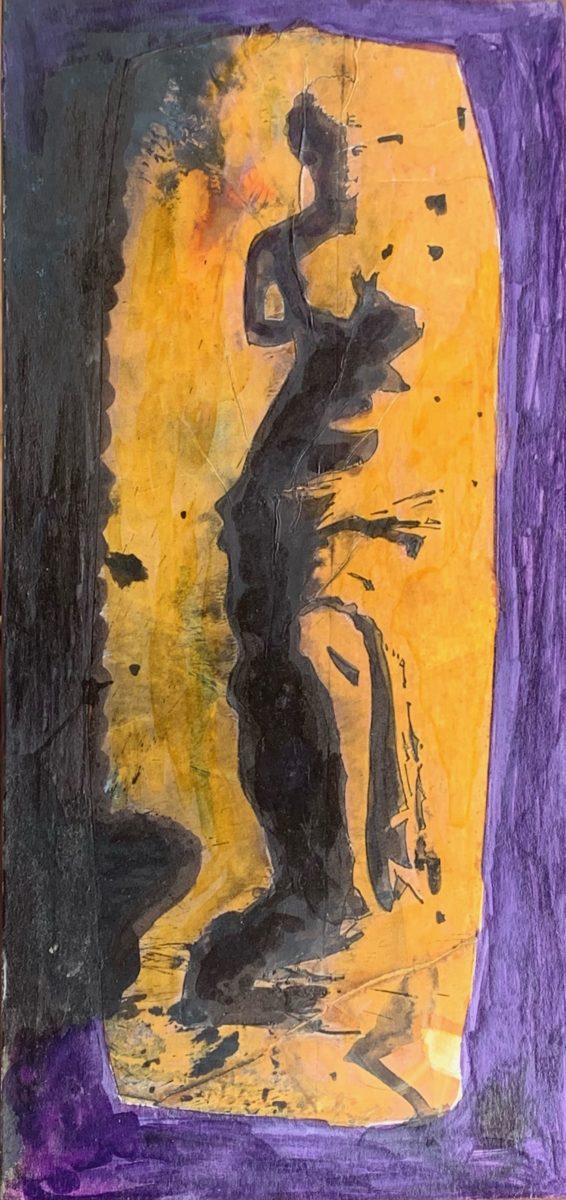
While there are many pieces in the collection which have a special story or meaning behind them for Argillet, she says if she had to choose a favorite work among those being presented in the current exhibition, it would be a watercolor of a small Venus De Milo. The work is a preparatory piece for a much more well-known painting on display at The Dali Museum, The Hallucinogenic Toreador, dating back to 1970. “I’m very touched by this watercolor because I saw Dali working on it and reflecting on what would become his larger painting. There’s a sense of double vision inside the Venus De Milo that is special,” she says. (RIGHT-Christine Argillet’s favorite image in the collection: Venus De Milo).
For art lovers, Salvador Dali: The Argillet Collection is a uniquely personal look at an artist through both his work and the photos and stories from a witness to his greatness, according to MMG Gallery Director Buckley. “Madame Argillet will take guests of the gallery on a story-filled journey from her childhood spent with Dali, filled with intimate and anecdotal tales of a collaboration and friendship that spanned five decades,” she says. “This is a presentation that Dali lovers and all art enthusiasts will treasure for many years to come.”
For Argillet, this latest tour of her father’s Dali Collection is the culmination of years of teaming up with galleries and museums throughout the world to carry out her mission of sharing Pierre Argillet’s esteemed collection of Dali’s work. Over the course of the past 20 years of doing so since her father’s passing in 2001, the curator says she sees her work is nearly done.

“When I became in charge of my father’s collection, I knew the best thing I could do was share it, show it,” she says. “This was the role I had in mind – to tell the story of how the art was done, how it came into reality and what the artist said. This collection has been shared with art galleries and museums around the world and across the United States. This is probably one of the last exhibitions I’m going to have. I think that my mission is almost done, and I feel very happy that this collection will be shown in Tampa especially.” (Dali being in character- RIGHT)
Salvador Dali: The Argillet Collection Copper Plates
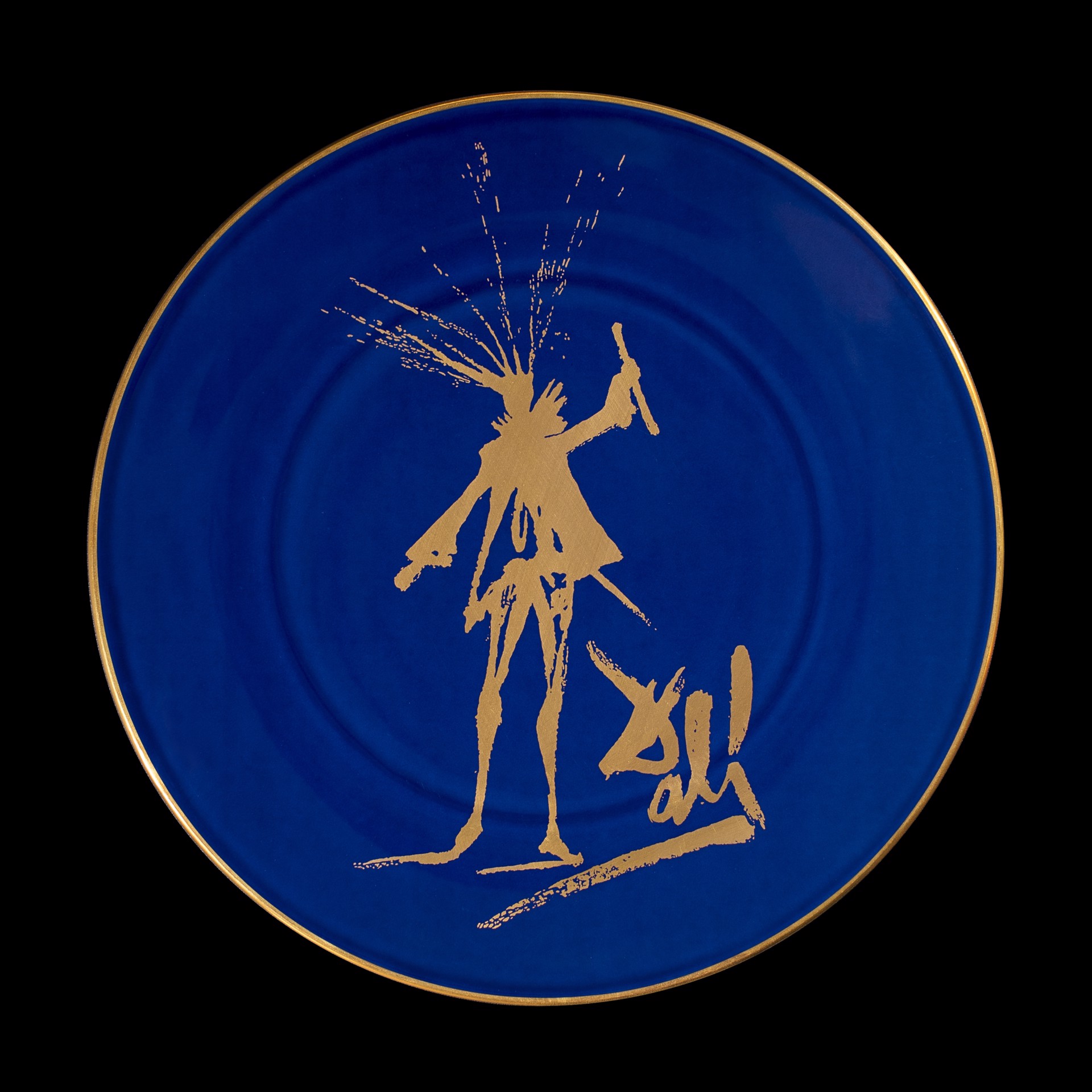
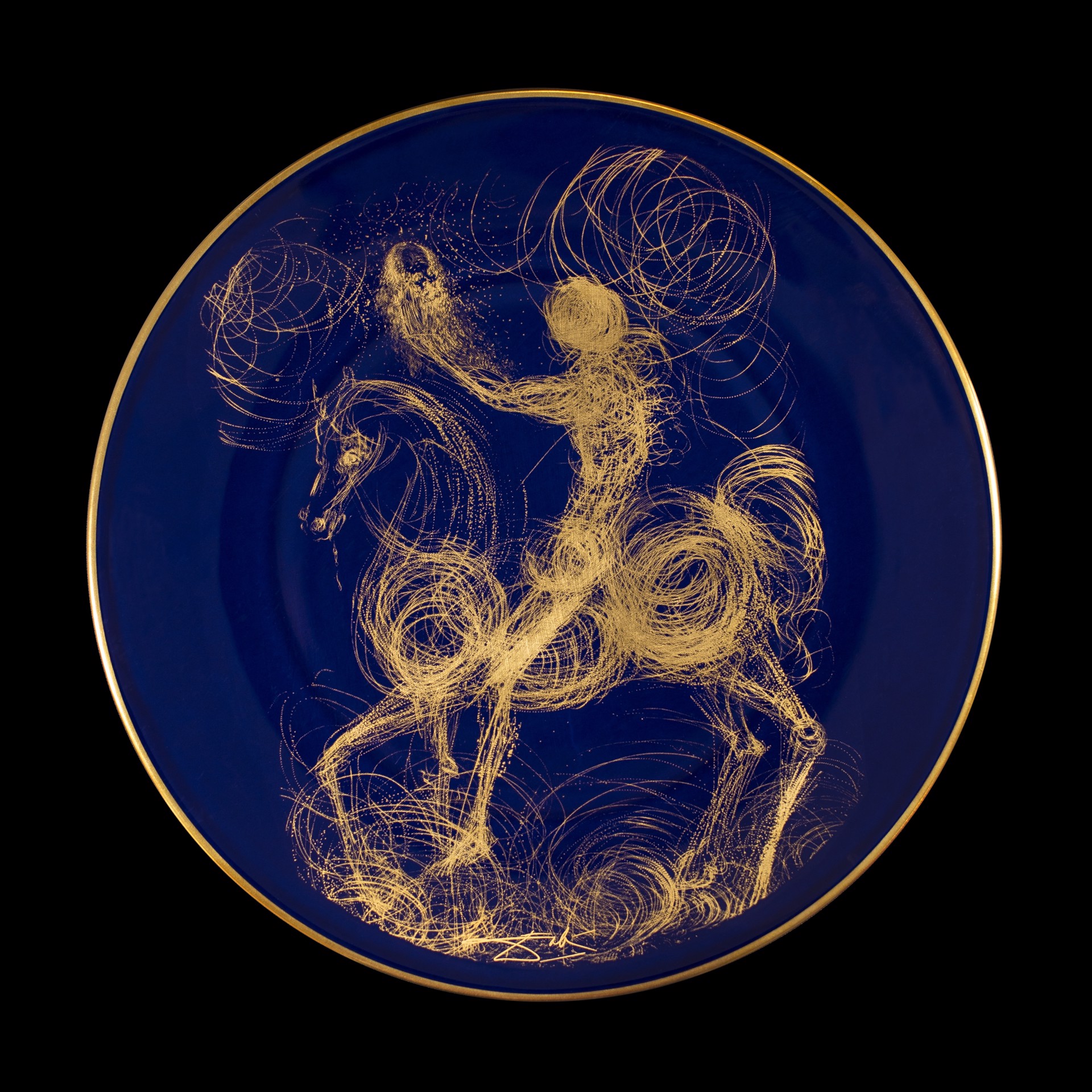
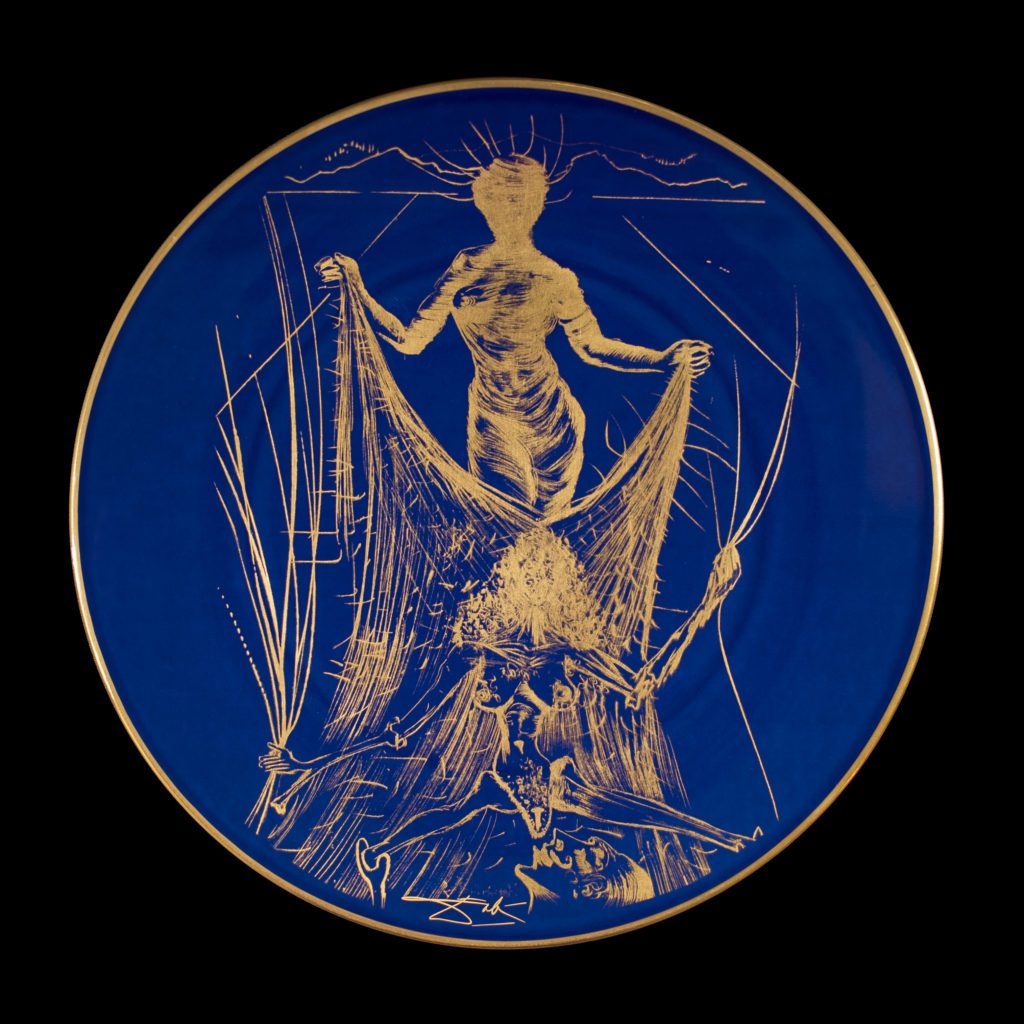
Argillet reflects on her memories as a young child able to engage with a world-renowned artist as a playbook of sorts for how to approach life. “It gave me a sense of freedom and expression early on, and a sense of humor that was a wonderful tool to be capable of telling things that are sometimes not very easy to say. And I would watch Dali working with such mundane things and making something so wonderful out of them and learned this way of using things for another destination than planned, and I would think this was magical,” she says. “It opened my mind to all kinds of art worlds including contemporary art and music, and it’s due mostly to that freedom that Dali knew how to transmit with a lot of charm and elegance.”
Content written by Chris Kuhn for Destination Tampa Bay™. Photos and artwork supplied by Michael Murphy Gallery and Relevant Communications for editorial use only–all rights reserved. For another show at Michael Murphy Gallery check out The Art of Rock and Roll here.
